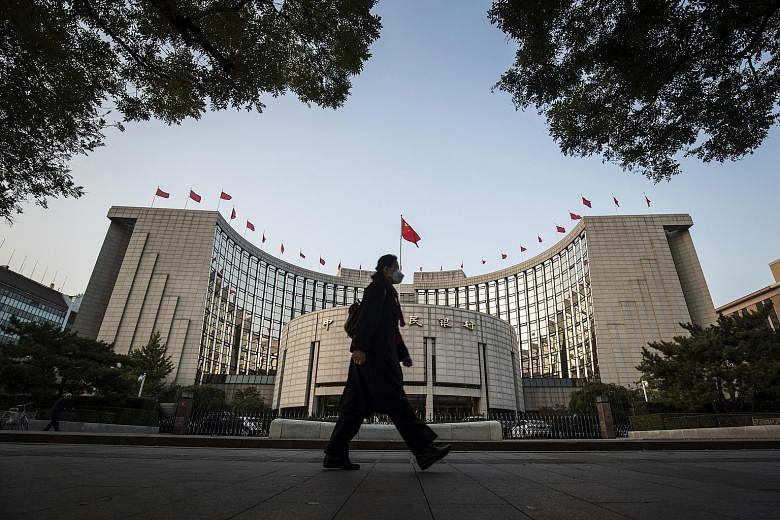BEIJING • China's central bank yesterday nudged up money market rates as the authorities sought to defuse financial risks without imperilling the economy, a balancing act that they have managed successfully so far this year as activity remained broadly steady.
The world's second-biggest economy has started to cool in recent months amid a government crackdown on high-risk lending and polluting factories, and the move by the People's Bank of China (PBOC) - coming hours after an anticipated US Federal reverse rate hike - signalled that Beijing will keep policy tighter next year.
A flurry of data on the day highlighted the economic impact of government efforts to wean China off its years-long addiction to debt, with industrial output, investment and property market all backing evidence of a moderation in momentum.
Analysts said the PBOC hikes, seen as a backdoor approach that avoids the need to raise benchmark policy rates, will not impede activity though they signalled a commitment by the authorities to continue curbing leverage.
"It's more a symbolic move which helps stabilise market expectations after the Fed rate hike," said economist Wen Bin at Minsheng Bank in Beijing.
The PBOC increased rates on reverse repurchase agreements, or reverse repos, used for open market operations by 5 basis points for the seven-day and 28-day tenors. It also increased rates on its one-year medium-term lending facility by 5 basis points.
It was the first rate increase by the Chinese central bank since March, but market interest rates have risen on their own in the interim as the government pursued a range of policies to lower debt in the economy.
That has dragged on activity, a fact underscored by yesterday's National Bureau of Statistics data releases which showed industrial output was up 6.1 per cent in November year on year, versus forecasts for an increase of 6 per cent, but below the 6.2 per cent gain in October.
China's fixed-asset investment growth also slowed to 7.2 per cent in the January-November period, from the 7.3 per cent expansion in the January-October months.
Along with the rest of trade-dependent Asia, China's economy lifted this year with an exports boom, while a government-led infrastructure spending spree and a resilient property market drove growth in the Asian giant to a surprisingly strong 6.9 per cent in the nine months of the year.
REUTERS

